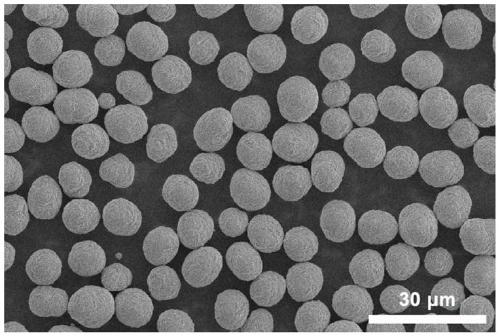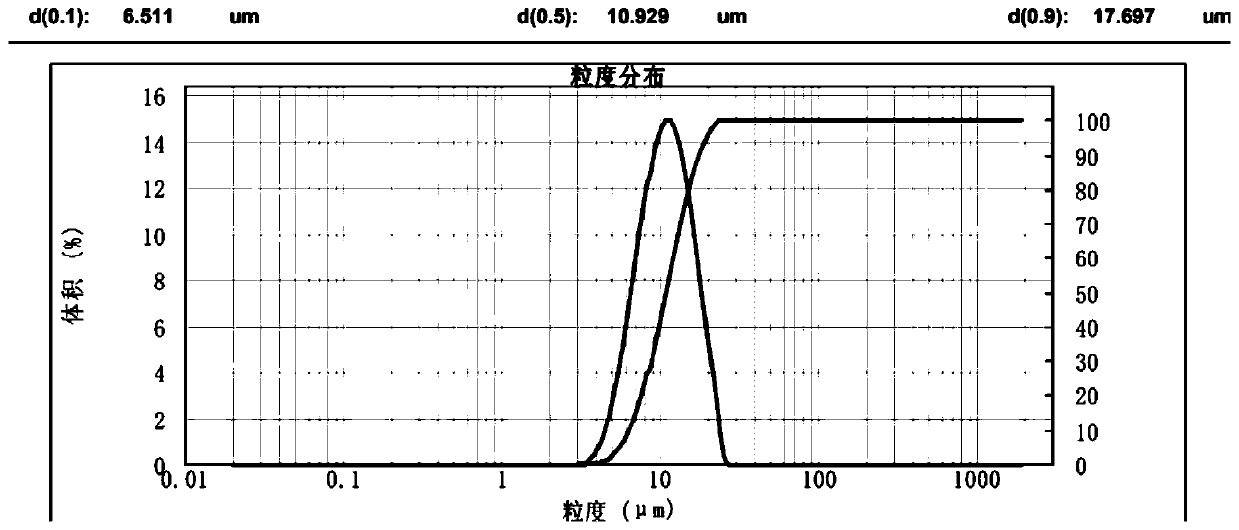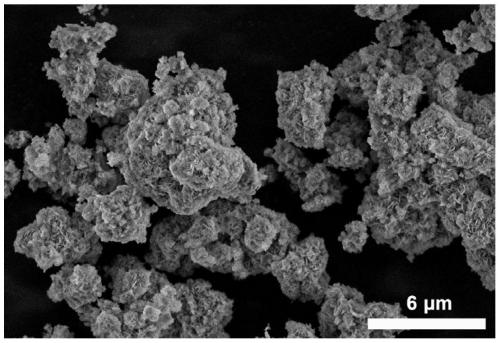Method for fabricating aluminum-doped ternary precursor by lithium ion battery positive electrode waste
A lithium-ion battery, aluminum doping technology, applied in the direction of battery electrodes, electrical components, secondary batteries, etc., can solve the problems of comprehensive recovery of unfavorable resources, a large amount of organic solvent waste liquid, nickel and cobalt precipitation, etc., to achieve economical and reasonable, good The effect of simple market prospect and overall process
- Summary
- Abstract
- Description
- Claims
- Application Information
AI Technical Summary
Problems solved by technology
Method used
Image
Examples
Embodiment 1
[0041] A method for making an aluminum-doped ternary precursor by utilizing the waste material of the positive pole piece of a ternary lithium-ion battery, comprising the following steps:
[0042] (1) Get 100g of nickel-cobalt-lithium-manganese oxide positive pole piece waste material of ternary lithium-ion battery and break it into fragments of 2mm×2mm;
[0043] (2) Roasting the crushed positive electrode waste described in step (1) at 600° C. for 3.5 hours, removing the adhesive and conductive additives on the pole piece, and obtaining the ternary positive electrode material and aluminum foil;
[0044] (3) The positive electrode material and aluminum foil described in step (2) are heated and leached with sulfuric acid and hydrogen peroxide, the acid concentration is 3mol / l, the addition of reducing agent hydrogen peroxide is 8%, the leaching S / L is 250g / l, and the leaching The temperature is 85°C and the time is 4 hours. After the leaching, the solid-liquid separation is obt...
Embodiment 2
[0049] A method for making an aluminum-doped ternary precursor by utilizing the waste material of the positive pole piece of a ternary lithium-ion battery, comprising the following steps:
[0050] (1) Get 100g of nickel-cobalt-lithium-manganese oxide positive pole piece waste material of ternary lithium-ion battery and break it into fragments of 2mm×2mm;
[0051] (2) Roast the crushed positive electrode waste described in step (1) at 600°C for 3.5 hours to remove the adhesive and conductive additives on the pole piece to obtain the ternary positive electrode material and aluminum foil
[0052] (3) The positive electrode material and aluminum foil described in step (2) are heated and leached with sulfuric acid and sodium sulfite, the acid concentration is 2mol / l, the addition of reducing agent sodium sulfite is 8%, the leaching S / L is 250g / l, and the leaching The temperature was 85°C and the time was 4 hours. After leaching, solid-liquid separation was performed to obtain leach...
Embodiment 3
[0057] A method for making an aluminum-doped ternary precursor by utilizing the waste material of the positive pole piece of a ternary lithium-ion battery, comprising the following steps:
[0058] (1) Get 100g of nickel-cobalt-lithium-manganese oxide positive pole piece waste material of ternary lithium-ion battery and break it into fragments of 2mm×2mm;
[0059] (2) Roasting the crushed positive electrode waste described in step (1) at 600° C. for 3.5 hours, removing the adhesive and conductive additives on the pole piece, and obtaining the ternary positive electrode material and aluminum foil;
[0060] (3) The positive electrode material and aluminum foil described in step (2) are heated and leached with sulfuric acid and hydrogen peroxide, the acid concentration is 4mol / l, the addition of reducing agent hydrogen peroxide is 8%, the leaching S / L is 250g / l, and the leaching The temperature is 85°C and the time is 4 hours. After leaching, the solid-liquid separation is obtaine...
PUM
 Login to View More
Login to View More Abstract
Description
Claims
Application Information
 Login to View More
Login to View More - R&D Engineer
- R&D Manager
- IP Professional
- Industry Leading Data Capabilities
- Powerful AI technology
- Patent DNA Extraction
Browse by: Latest US Patents, China's latest patents, Technical Efficacy Thesaurus, Application Domain, Technology Topic, Popular Technical Reports.
© 2024 PatSnap. All rights reserved.Legal|Privacy policy|Modern Slavery Act Transparency Statement|Sitemap|About US| Contact US: help@patsnap.com










